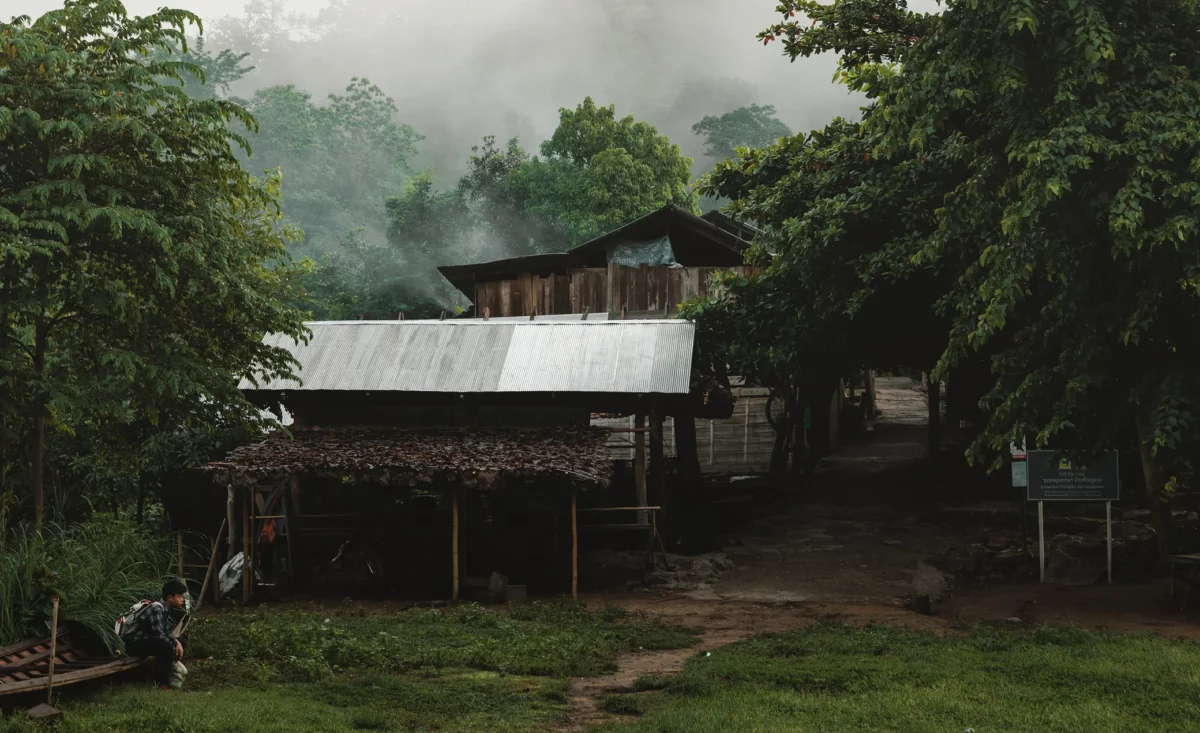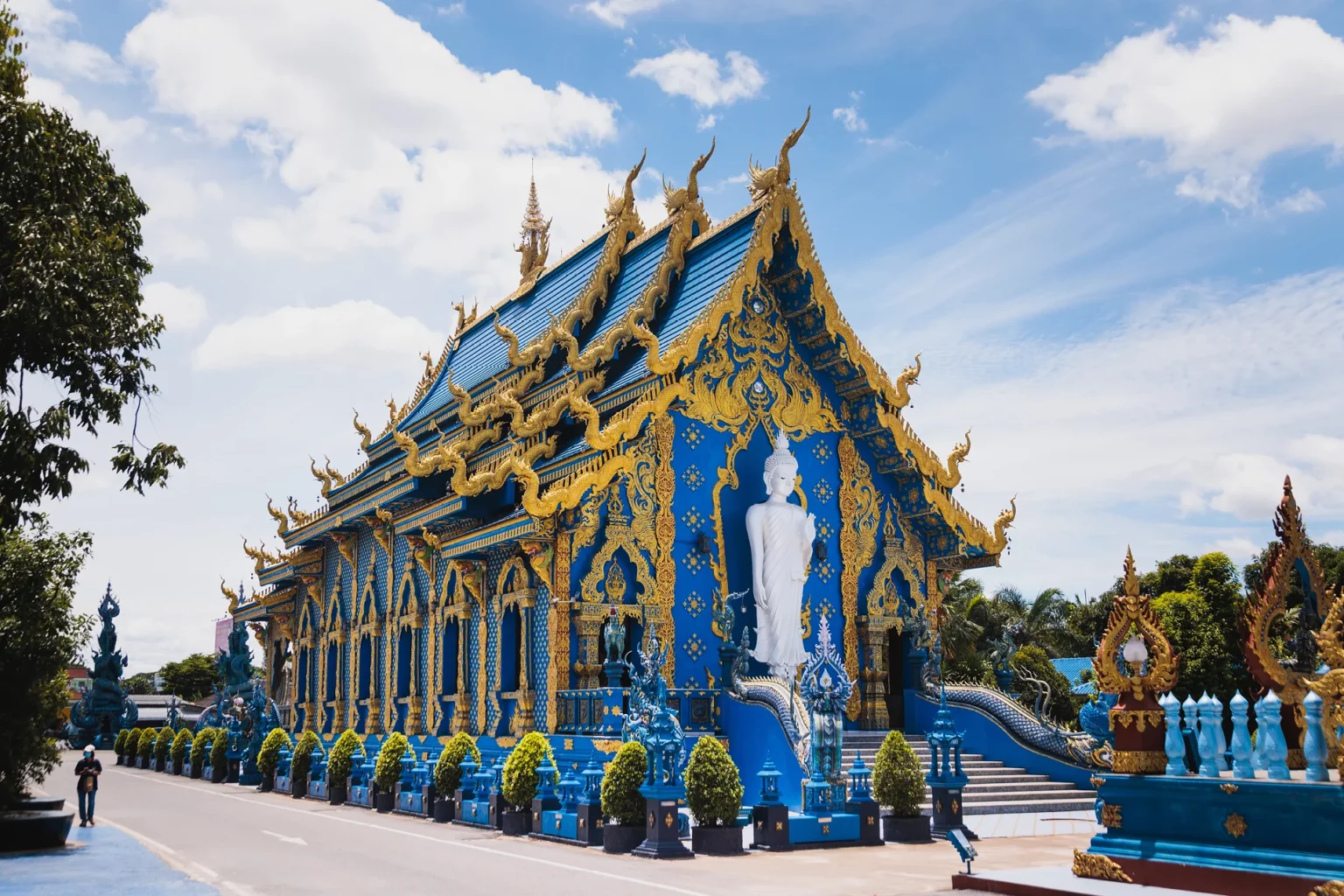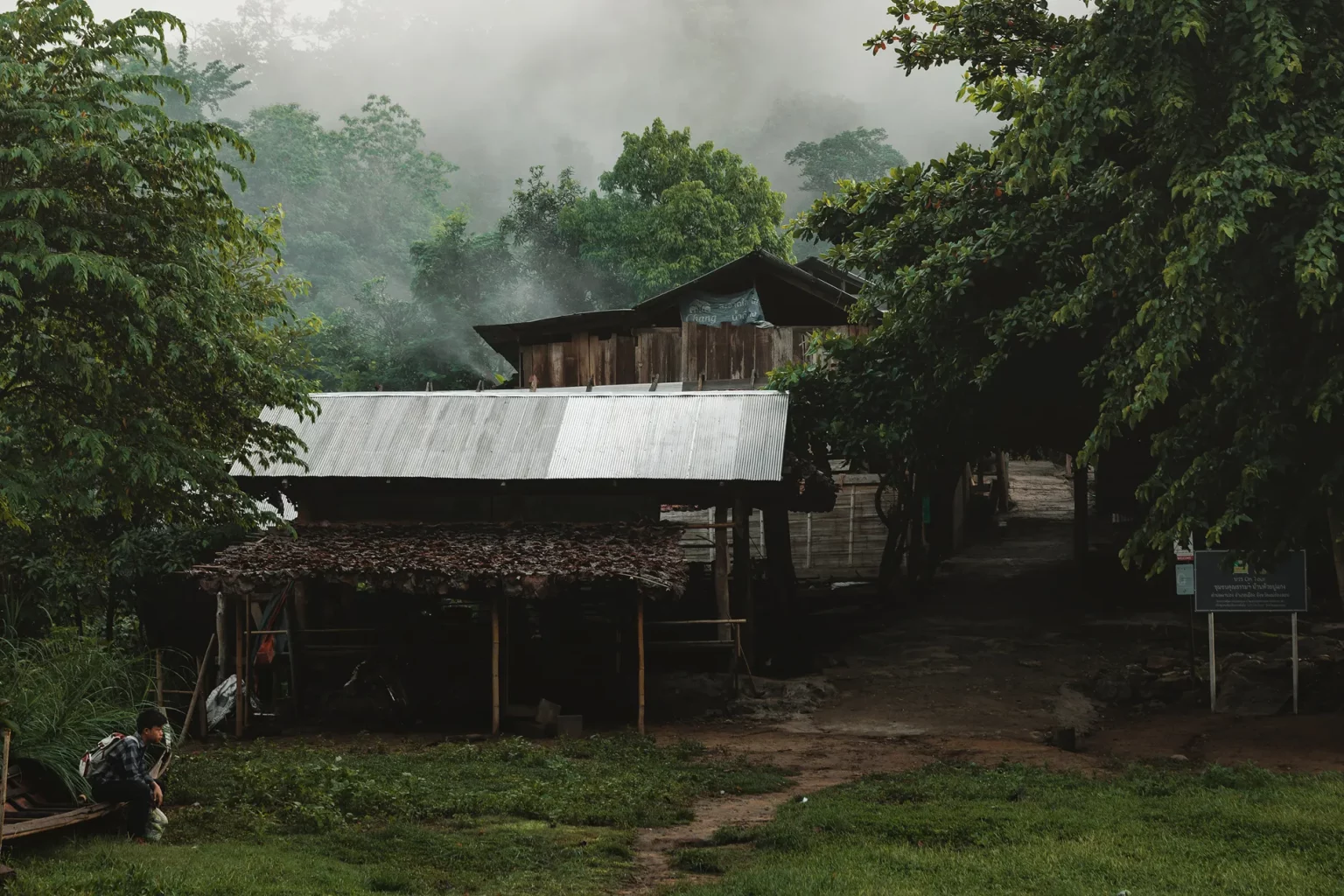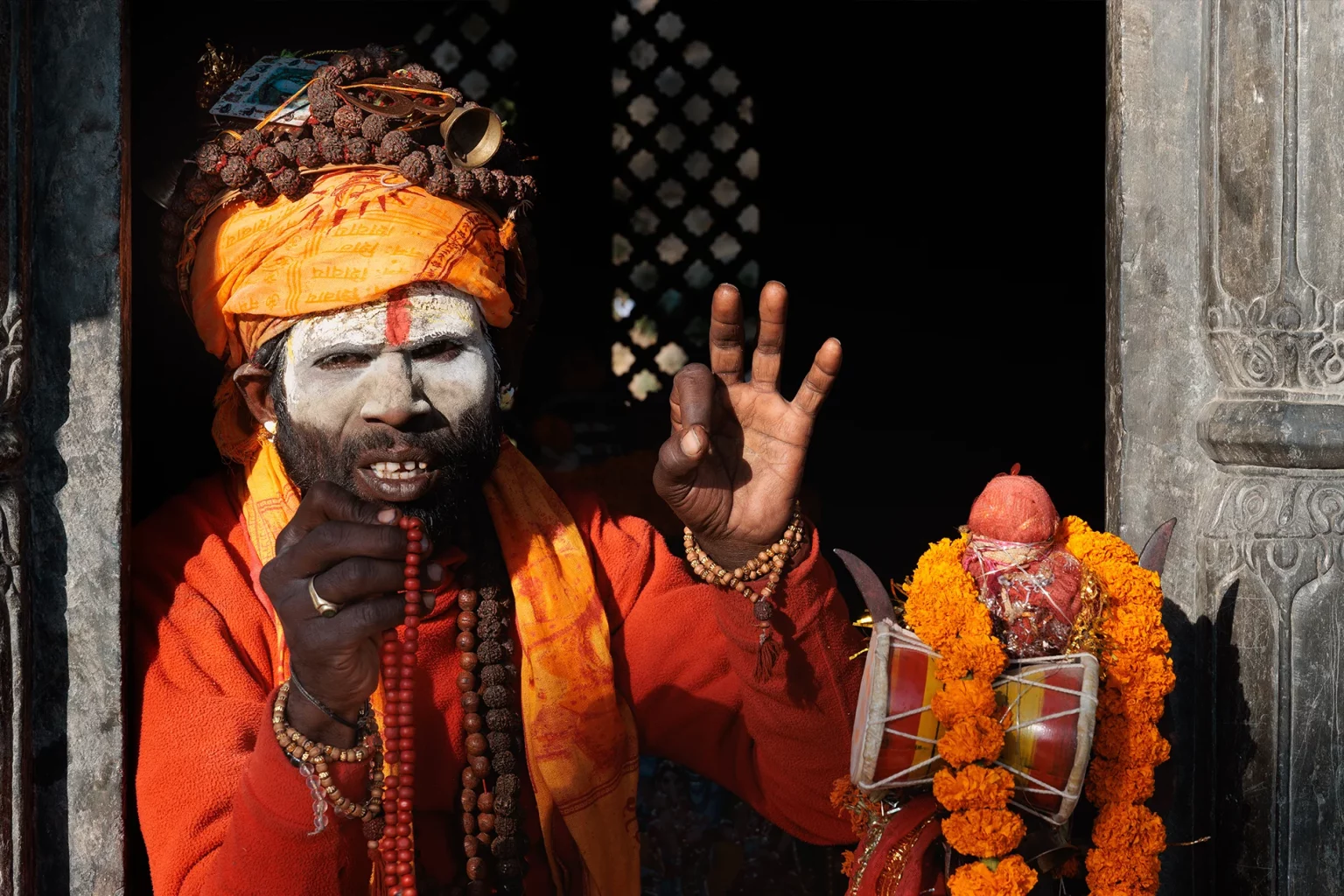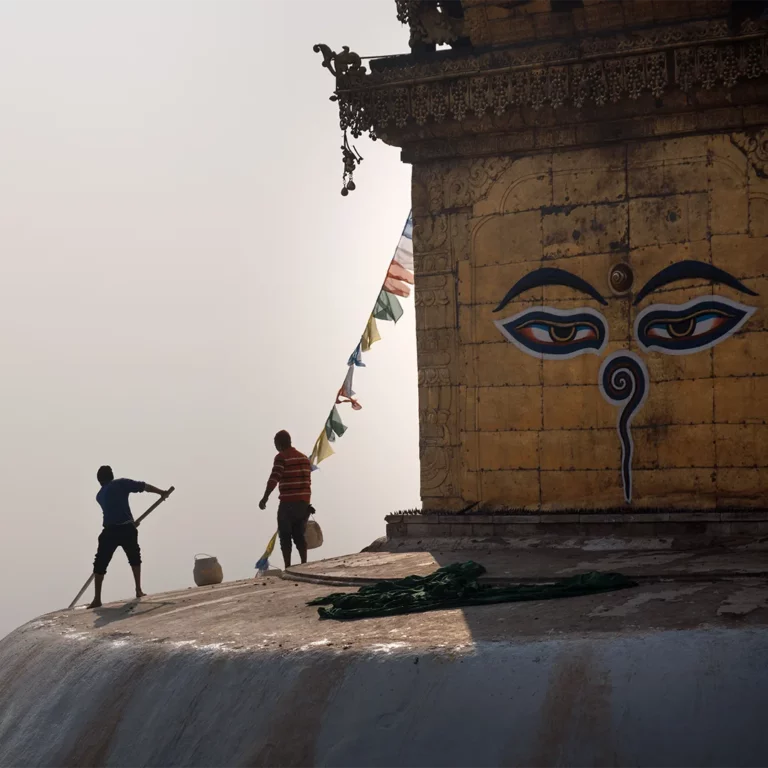It all began with a tap on a bench!…
The Kayan tribe elder’s friendly, thin-lipped grin tells me that “no” is not an answer. On her right, a guitar. On her left, plenty of space for me to join her and to enjoy being lost in translation.
I had been observing Mu Kler for a moment before she called me. She seemed to be waiting for something. I don’t know if it was the overall shape of her body, whose growth has been impacted by the rings around her neck and legs, the oversize bench she was sitting on, or the pink teddy bear on the towel she was using as a headband, but she made me think of a kid waiting for a bus after school.
Like a fortune teller trying to read the lines in someone’s palm, I’ve been trying to read the creases of her face. Her two dark brown eyes, slightly shiny, conveyed a certain sadness that did not match with her horizontal, tinted smile. Her face was slightly asymmetrical, probably from the betel that she must have been chewing since a young age.
As I accepted her invitation and sat next to her, her face lit up.
Song needs an intro
Her grandson, Baaung, joined us. He’s 23 years old, he learned English at school and is now studying in Chiang Mai; luckily enough he’s on holiday and he volunteered to be our interpreter. So, the three of us started to chat.
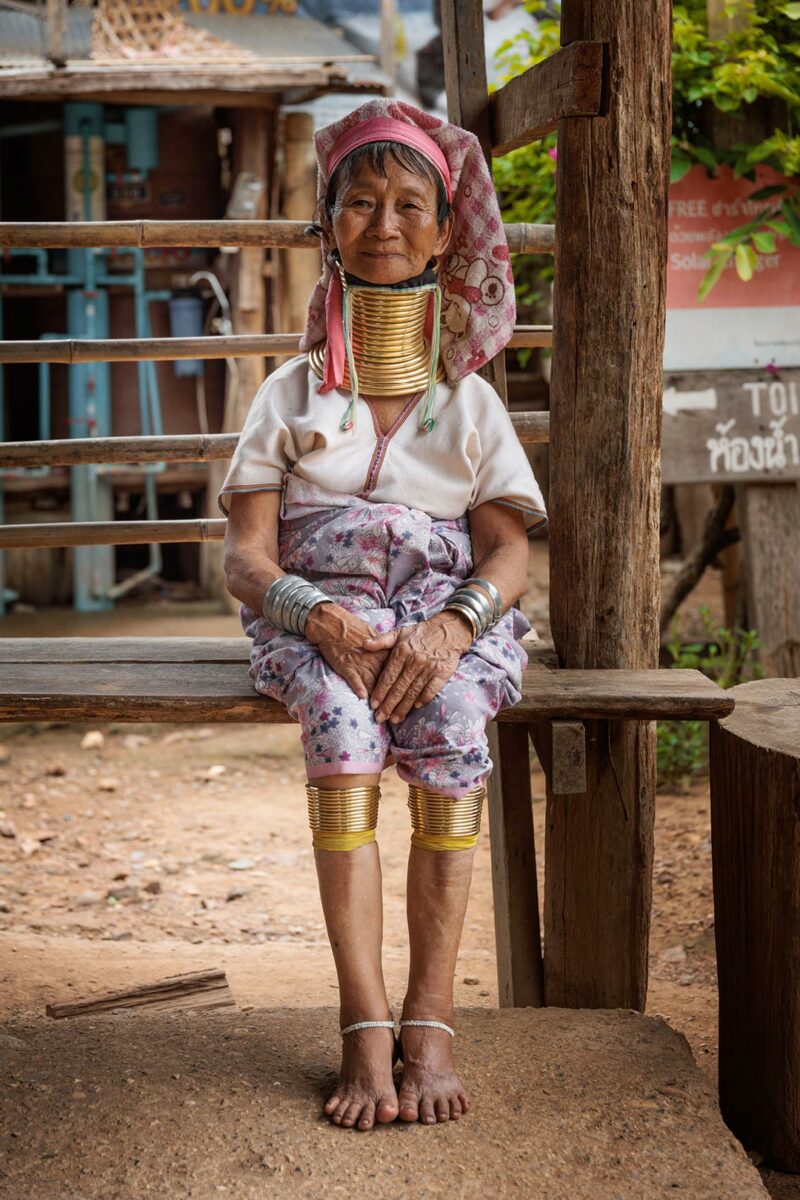
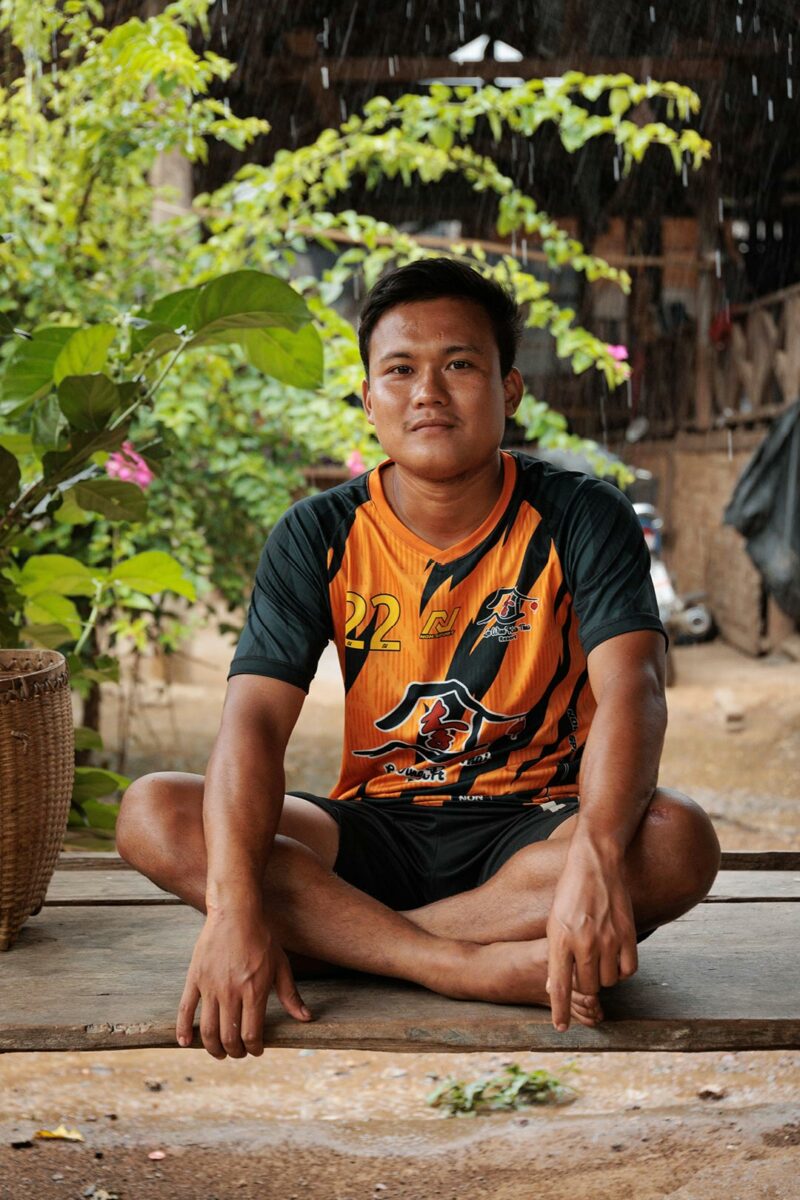
Like many of the members of the Kayan tribe, Mu Kler was born in war-torn Burma, only 8 years after the country reached its independence from the British. She’s the mother of 10 children, but in the harsh living conditions, death claimed back five of them. I watched her looking at the sky trying to catch a glimpse of those memories but nothing came. I realised that she’s not used to having people asking more about her personal life in such details, I wonder what she sees in her memories: loss, war, diseases? She doesn’t seem to want to tell me more about her life in Burma, so I decided to not go further and respect her privacy.
Migration
Ten years ago, after a life that I can only try to imagine, she moved to Huay Pu Keng, with the hope to live a more peaceful life, close to her four sons and gran-children. She crossed the border with her husband Lasan with whom she has been sharing her life for almost 50 years now. Together they live in a cabin just after a small stretch of forest, outside the main street of the village.
”There, it was difficult to have access to water, here the water comes to us!”
Mu Kler, Kayan tribe elder
She told me she misses Burma a lot, but with no money it was impossible for her to receive any medical help. Looking around and pointing at the river she told me ”There, it was difficult to have access to water, here the water comes to us!”, the village of Huay Pu Keng does seems like a welcoming place to live, especially at her age.
First verse: The brass spiral of the Kayan tribe
As she went on with her story, she was constantly toying with a spiral of rings attached perpendicularly to the first six rings around her neck, like a pendant. These smaller rings serve to preserve the aesthetics of the immense column slithering around her neck.
To this day I cannot stop thinking of the weirdness of what humanity is. We came out of the animal kingdom as a conscious anomaly and soon we started creating strange rules, based upon beliefs and fears, we agreed on their meaning and passed them on as traditions and culture. And there is something truly powerful in that.
For the Kayan tribe, one of these traditions is the brass coil that is customarily put around the neck and legs of the women. She received her firsts when she was 5 years old! Now, at 66, she wears 22 rings around her neck, as well as a dozen of them below each knee. On top of having shaped her entire life, the rings also shaped her body, giving her the unique stature of the long neck women.
Though she confessed to me of having back pain and difficulties walking, it seems that she refuses to make the link between the pain and the rings. She told me several times that she loved to wear them.
When I asked if I could take a photo of her, a man passing by shouted a joke in one of the dialects spoken in the village; everyone around laughed, Mu Kler included, and when I asked for a translation, it seemed that the man said: ”You must be the most beautiful woman here since the white man came to take a photo of you!”, I heard this joke several time during my stay.
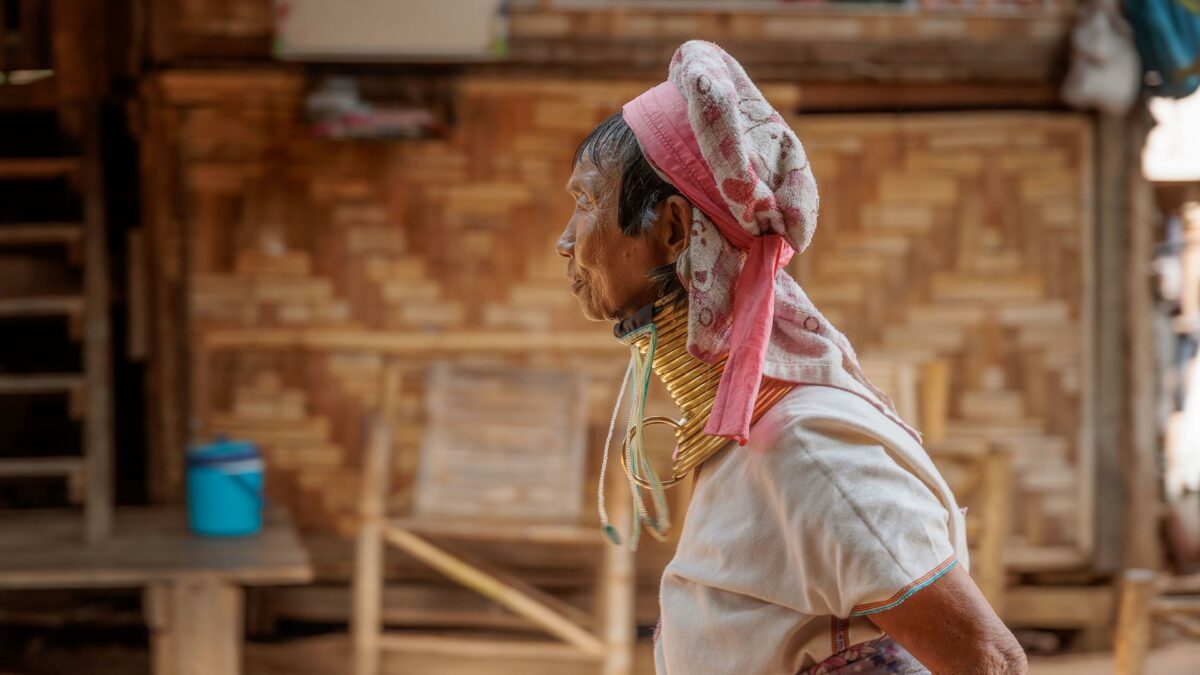
Beauty is in the eye of the beholder, but more often, the beholder is called tradition, and it’s often drenched in expectations, prejudice, will to control and beliefs… It made me reflect a lot on beauty standards all over the world, especially those imposed on women.
Where does the need to mutilate come from for mankind? How did we get where we are? From head to toe, over the centuries and across continents, we have constricted, flattened, pierced, stitched, shrunk parts of the body in order to make them fit into a standard fabricated out of thin air and justified in the most creative and absurd ways. Those ideals are all very different from each other but they have one main thing in common, they exist because a handful of individuals is powerful enough to enforce them on a specific group of people.
Once established as traditions, it will be the group itself that will ensure that they are respected. And there won’t be much left to do for those who initially imposed them other than reinforce the idea of their rightness and necessity.
It would very easy for us to judge. Who wants to be mutilated against their will, right? But those who want to understand must take a different road from the ones who only see the injustice. There is more to reality than the story we see through our own lenses. Saying otherwise would be denying the impact of our beauty standards perpetuated in today’s oversharing social media landscape! We are ultimately a complex species.
Chorus: a choir for the elders
The previous morning, I had the chance to attend the New Moon ceremony, held every moon cycle in the village. I observed Mu Kler arriving from the forest, walking alone on a tiny path that led out of the tree maze. She looked like an ancient spirit of the woods who came down for the ceremony.
Calmly seated, everyone seemed to be waiting for her. As she entered the sacred space the holy man started preaching, but Mu Kler was not ready. She first sat in the front, then moved to the back, stopping to spit the brown betel leaves goo across the railing, finally settling at the back of the room calling a crying toddler, inviting him to go sit next to her.
When all the voices of the Kayan tribe joined like a church choir she seemed to settle even more. Afterwards, when we spoke, I asked her if she liked the ceremony and she replied ”It makes me feel really good to hear people sing together.” And, for sure, those repetitive mantras that the Kayan tribe sang were timelessly uplifting, they spoke to me like they would speak to everyone, I think.
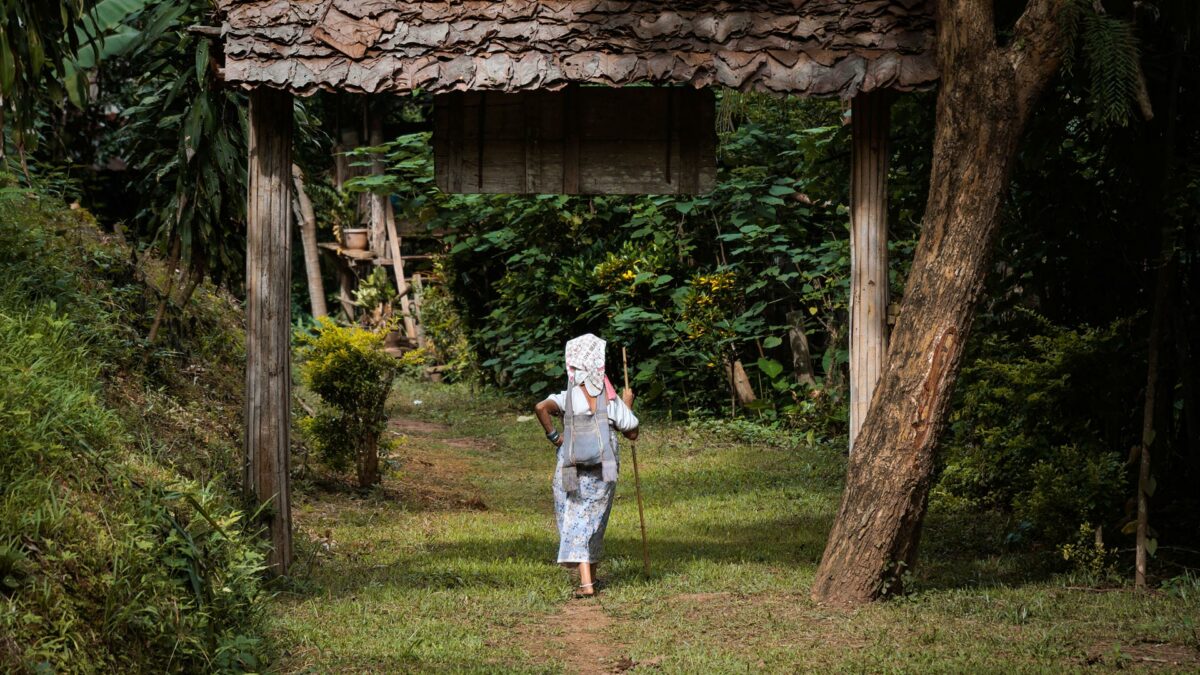
Seeing everyone waiting for her, made me realise how revered she is as an elder of the tribe. She emanates a deep sense of respectability that seems to expand with every new wrinkle. A skill known by many elders, something that is achieved by simply being.
Second verse: The silent game
I found it hard not to feel a certain melancholy when I spoke with her. It felt like there was a silent agreement between us, that we were playing some sort of game: I came to see the tribal woman with the rings around her long neck, she will answer my questions, and by the end of my stay I will buy something from her and she’ll pose for a photo. I could feel the survival skill piercing through the layers of incommunicability between us.
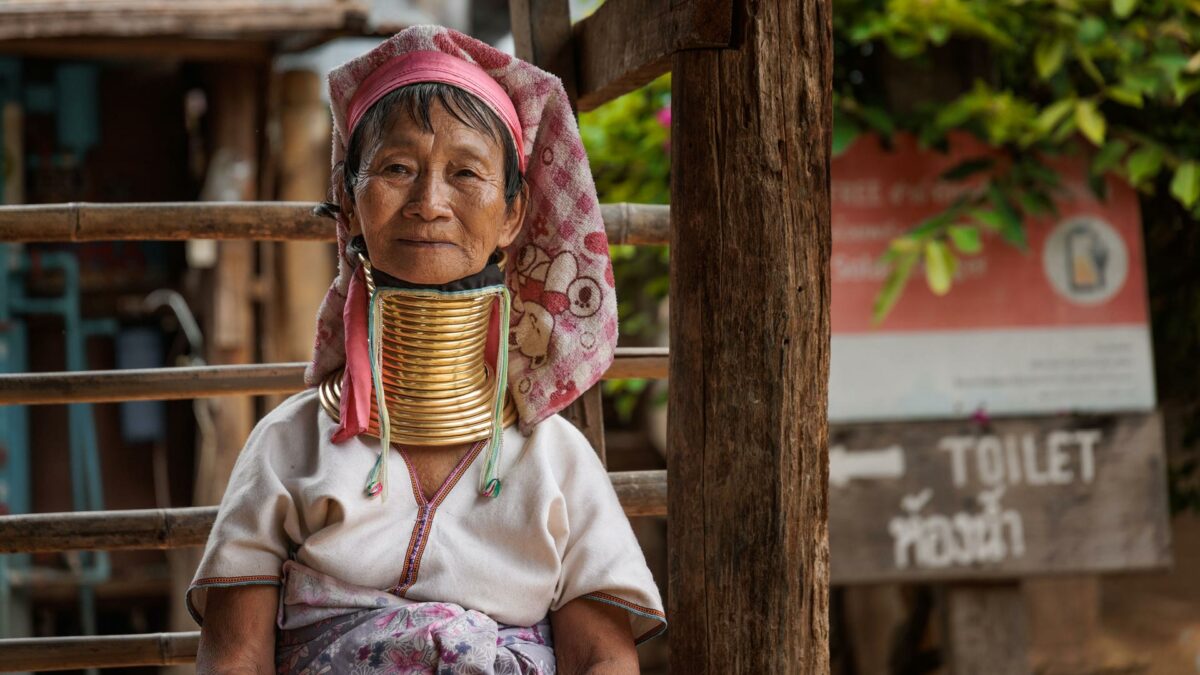
Is this a ability learned by living an entire life with only a few choices? Maybe the result is a personality that dug itself through crises, civil-wars, loss of people and the land that birthed her. But most of all, Mu Kler is someone that decided to never give up, to survive, no matter what.
Outro: The soundtrack of the Kayan tribe’s elder
Her life didn’t become clearer to me because I asked some questions! We had no common languages to communicate easily and we often got lost in translation with long silences. But despite all this I think I have a good sense of who Mu Kler is. After all you don’t always need words to understand one another! This is the point of this article, building bridges that sometimes are made of something other than words.
In her I can see someone who has found a balance between playfulness and seriousness, action and inaction, movement and stillness. Because of all she has bee through in life, she earned her right to carelessness and she wears it out and proud. But at the same time she is someone who is extremely grounded and responsible, still supporting herself and her family with her own income in countless ways and for a number of years.
It indeed began with a tap on a bench but it all became clear with a song. A song made on a 4 strings guitar, one repetitive chord, Mu Kler’s shaky voice as a lead, and a bunch of roosters as backup singers. The familiar sound seemed to have travelled in time and in space, it tells the story of Mu Kler but, with it, it also carries bits and pieces of the puzzle of humanity… I could describe what I felt when she played for me, but instead, now that I gave you a bit of context, I want to invite you to listen and have your own experience, just press play and close your eyes.
As the song ended, her eyes were shiny again …
On the 12th of April, the village lost a beloved voice!
Mu Kler passed away, leaving behind a legacy woven through with resilience, tradition, and the gentle melodies of her songs. Her life remains a testament to the strength and beauty of the Kayan people. Though she is no longer physically with us, the echo of her song and the spirit of her laughter will forever resonate in the hearts of those who had the privilege to meet her. As we remember Mu Kler, we honour not just an elder of the Kayan tribe, but a symbol of the strength of the feminine spirit.
